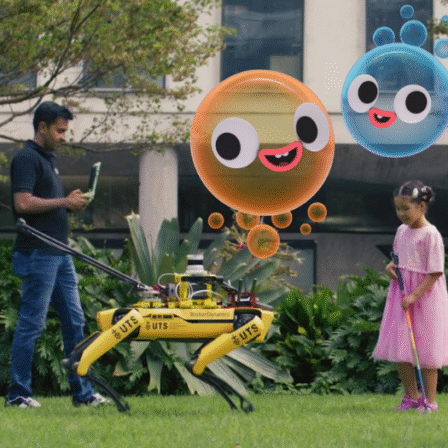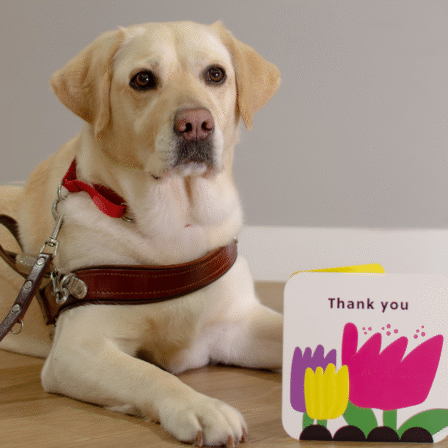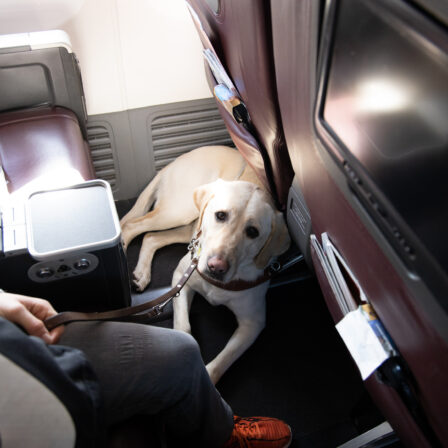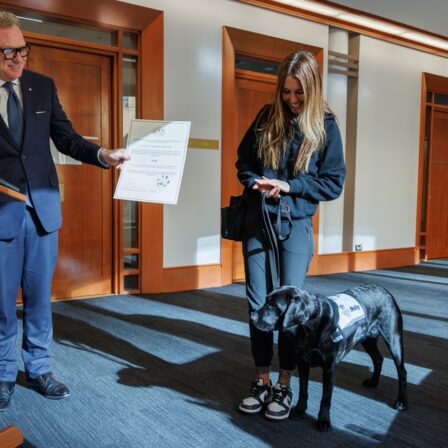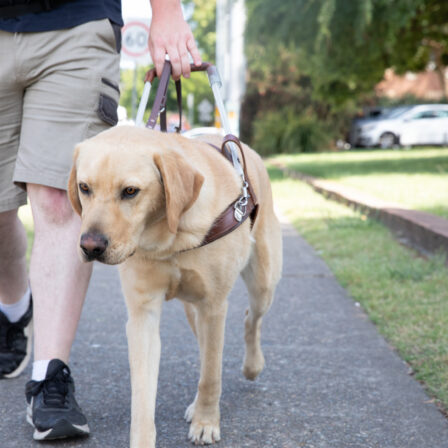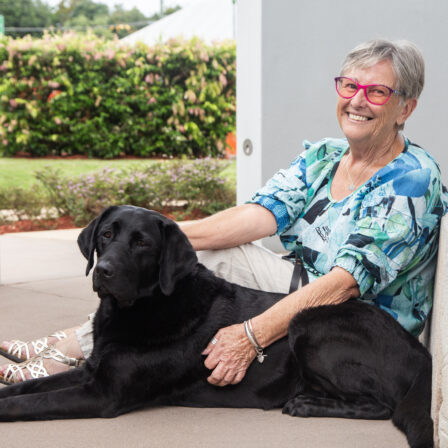News
How to safely offer sighted guide assistance to someone with low vision or blindness
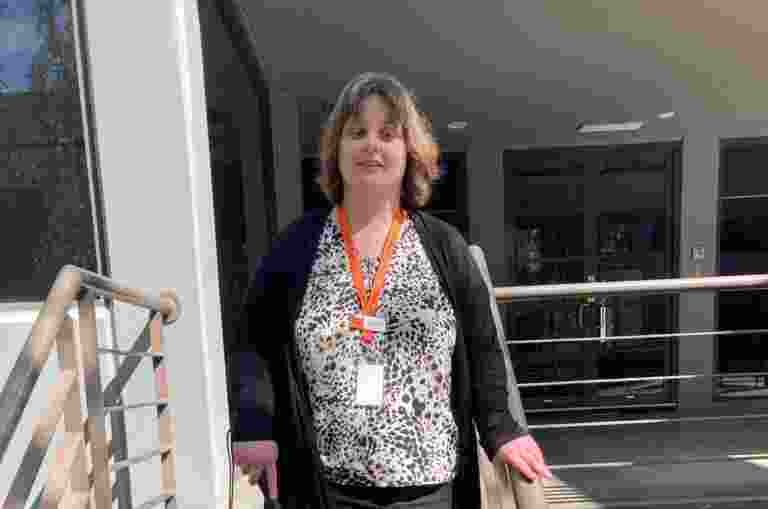
Kimberley works at Guide Dogs Victoria as a Support Coordinator Trainee. She is also a white cane user and through her lived experience, has written an article about sighted guiding.
What is Sighted Guide?
Sighted Guide is about assisting someone who is blind or who has low vision to safely navigate the environment around them. It is about working under the direction of the person who is blind or vision impaired to determine what they need and how they wish to be supported. Generally, the person being guided will hold your arm. It is important to let the person hold your arm in the place that is most comfortable for them, often this will be just above your elbow.
What is the best way to offer assistance to someone with low vision or blindness?
Approach the person calmly and ask them if they need assistance. Avoid grabbing or touching them until you’ve determined that they need support and received their permission to do so. Listen to the person and allow them to tell you how they would like to be supported. If the person declines your offer of assistance, don’t force them. It’s always good to offer, but you need to remember that it’s the person’s choice to accept or decline offers of assistance.
What’s the best Sighted Guide technique?
After you have safely established that someone wishes for Sighted Guide assistance, the best way to make contact is to stand next to them and place the back of your hand against that of the person you are guiding. The person will then move their hand to a position that is most comfortable for them; generally they will hold your arm just above your elbow.
Once the person is holding your arm, keep your arm relaxed, walk normally and the person you are guiding will follow you. Make sure you warn the person about any upcoming obstacles such as steps, uneven ground or narrow spaces. It’s helpful to offer the handrail when walking up or down steps and to briefly stop at the top or bottom of the steps to let the person know that they’re on the last step. If you are walking through a door or a narrow space, stretch your hand behind you, and the person you are guiding will step through the space behind you. Once you are through the narrow space simply move your arm back to your side and the person will move beside you again.
What should I do if someone appears to be lost or in danger?
Approach calmly and offer assistance. In situations where someone appears to be lost or in trouble, the inclination is to act quickly to prevent harm or distress. Adopt a calm and steady approach and never grab or yell at the person as this can appear frightening or threatening, and may even put their safety at risk.
Imagine this. You see someone getting off a bus with a cane. You think they might need help, and you arrive just as they’re stepping off the bus. In a panic, you decide to reach out and grab them. The person loses balance and falls. The action is well intended, but it results in the person getting hurt.
Instead, simply notify the person that there is a step in front of them before they get off the bus. The most important thing is to speak first so the person knows you’re there, and don’t assume they want to be touched or grabbed. If the person does want further assistance find out from them what support they need or ask them if they want to hold your arm.
Key messages
- Approach calmly when offering someone assistance.
- Avoid grabbing or touching the person until they allow you to do so. Unexpected physical contact can be very confronting.
- Allow the person to tell you how they need to be supported.
- Don’t freak out if you make mistakes!
- Most importantly, it’s always good to offer support but never force the issue. Try not to take it personally if the person says no.



